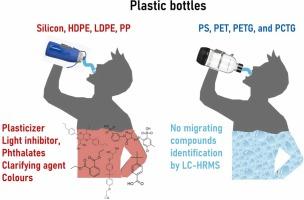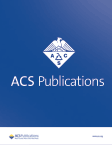Chemical Migration from Reusable Plastic Bottles: Silicone, Polyethylene, and Polypropylene show Highest Hazard Potential in LC-HRMS Analysis
IF 2.9
Q2 PUBLIC, ENVIRONMENTAL & OCCUPATIONAL HEALTH
引用次数: 0
Abstract
Estimating the chemical hazards of drinking water stored in reusable plastic bottles is challenging due to the numerous intentionally and unintentionally added chemicals. To address this, we developed a broad screening strategy using evaporation enrichment and liquid chromatography high-resolution mass spectrometry (LC-HRMS) to evaluate migration of non-volatile chemicals from various reusable plastic bottles. The study analyzed a wide range of materials, revealing significant variability in chemical profiles across different bottle types. Over 70% of nearly 1,000 unknown compounds were unique to specific bottles. Silicone, HDPE, LDPE, and PP bottles showed the highest migration rates, with silicone releasing the most unknowns, but also phthalates and plasticizers. PP bottles exhibited concerning migration of clarifying agents and bisphenol A derivatives. In contrast, PS, PET, PETG, and PCTG had minimal migration, indicating lower health risks. These findings highlight the need for comprehensive assessments of plastic materials to improve consumer safety.

可重复使用塑料瓶的化学迁移:有机硅、聚乙烯和聚丙烯在 LC-HRMS 分析中显示出最高的危害潜力
由于可重复使用塑料瓶中有意或无意添加了大量化学物质,因此估算可重复使用塑料瓶中储存的饮用水的化学危害具有挑战性。为了解决这个问题,我们开发了一种广泛的筛选策略,利用蒸发富集和液相色谱高分辨质谱法(LC-HRMS)来评估非挥发性化学品从各种可重复使用塑料瓶中的迁移。该研究分析了多种材料,发现不同类型的瓶子在化学特征方面存在显著差异。在近 1000 种未知化合物中,70% 以上是特定瓶子所特有的。硅胶瓶、高密度聚乙烯瓶、低密度聚乙烯瓶和聚丙烯瓶的迁移率最高,其中硅胶瓶释放的未知化合物最多,但也释放邻苯二甲酸盐和增塑剂。聚丙烯瓶显示出澄清剂和双酚 A 衍生物的迁移。相比之下,PS、PET、PETG 和 PCTG 的迁移率最低,表明健康风险较低。这些发现凸显了对塑料材料进行全面评估以提高消费者安全的必要性。
本文章由计算机程序翻译,如有差异,请以英文原文为准。
求助全文
约1分钟内获得全文
求助全文
来源期刊

ACS Chemical Health & Safety
PUBLIC, ENVIRONMENTAL & OCCUPATIONAL HEALTH-
CiteScore
3.10
自引率
20.00%
发文量
63
期刊介绍:
The Journal of Chemical Health and Safety focuses on news, information, and ideas relating to issues and advances in chemical health and safety. The Journal of Chemical Health and Safety covers up-to-the minute, in-depth views of safety issues ranging from OSHA and EPA regulations to the safe handling of hazardous waste, from the latest innovations in effective chemical hygiene practices to the courts'' most recent rulings on safety-related lawsuits. The Journal of Chemical Health and Safety presents real-world information that health, safety and environmental professionals and others responsible for the safety of their workplaces can put to use right away, identifying potential and developing safety concerns before they do real harm.
 求助内容:
求助内容: 应助结果提醒方式:
应助结果提醒方式:


